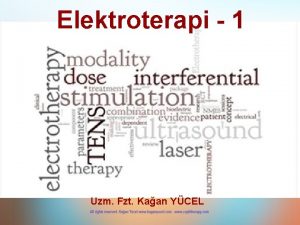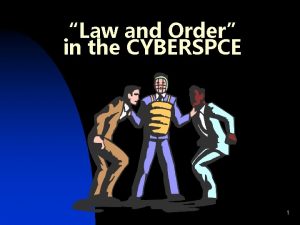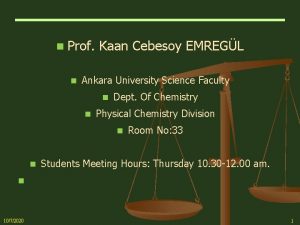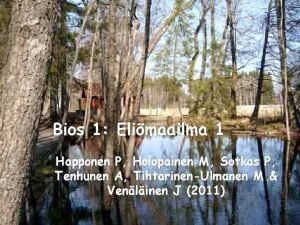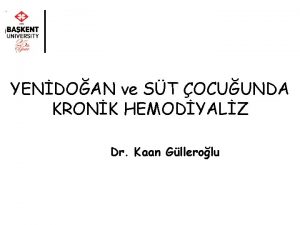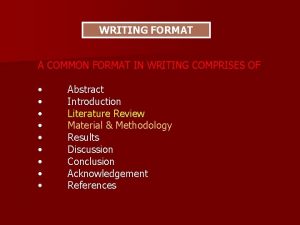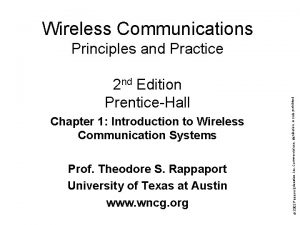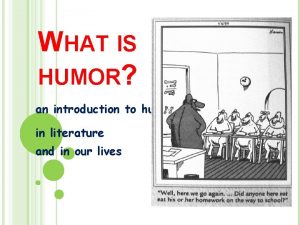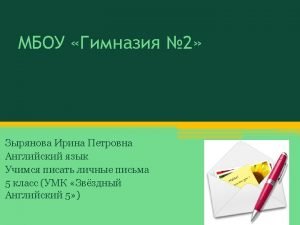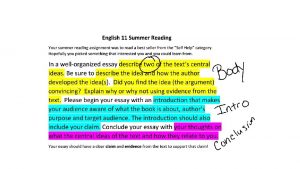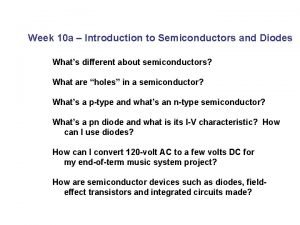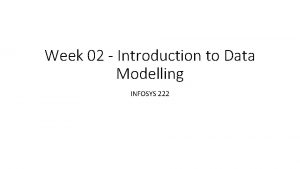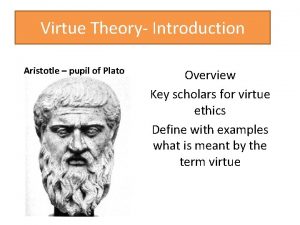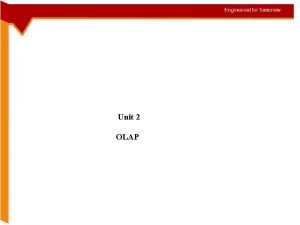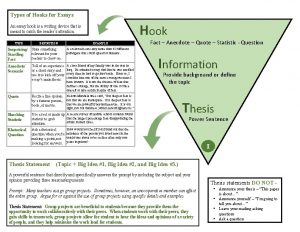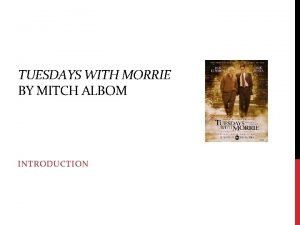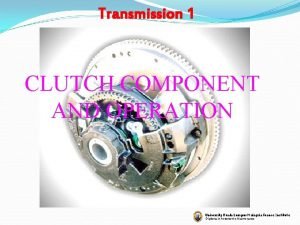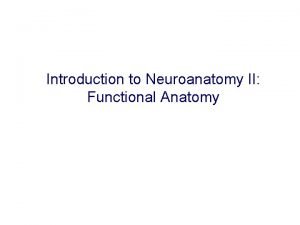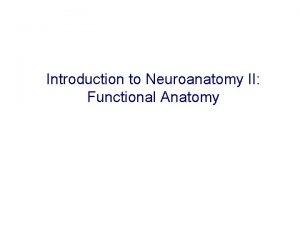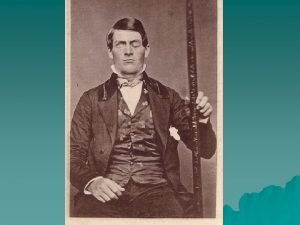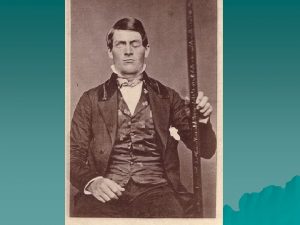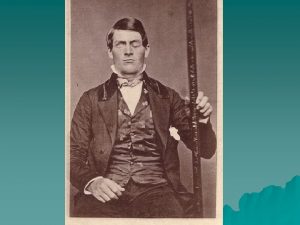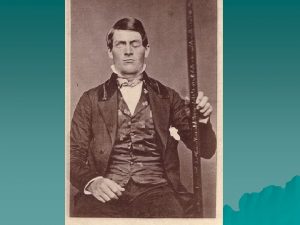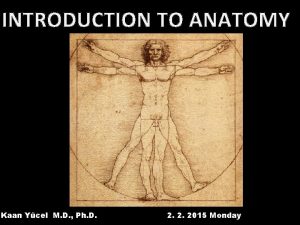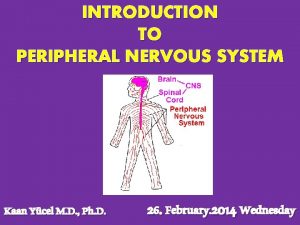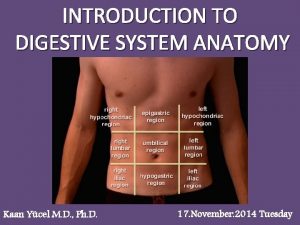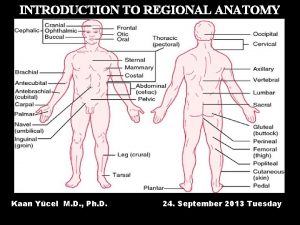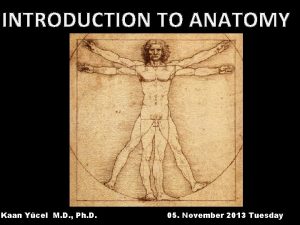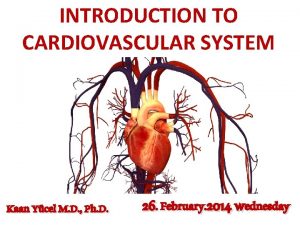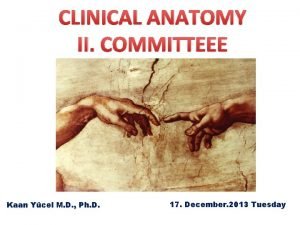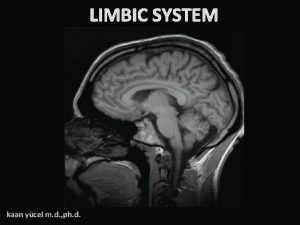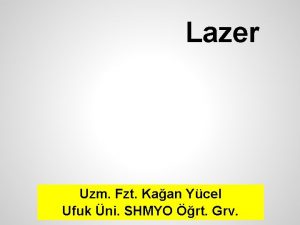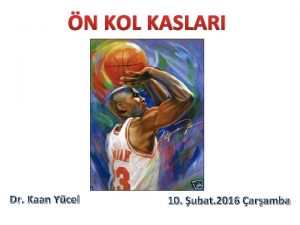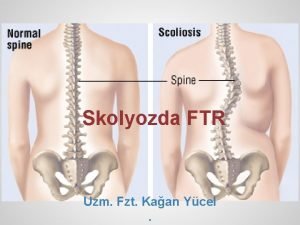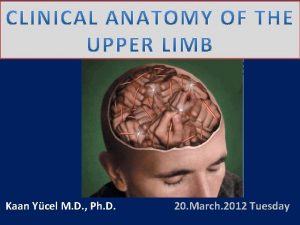INTRODUCTION TO NEUROANATOMY Kaan Ycel M D Ph



















































![CSF [Cerebrospinal fluid] Lateral ventricles Third ventricle Fourth ventricle CSF [Cerebrospinal fluid] Lateral ventricles Third ventricle Fourth ventricle](https://slidetodoc.com/presentation_image/2b24d9a0c1978e59844c874bc7ad8e28/image-52.jpg)


















- Slides: 70

INTRODUCTION TO NEUROANATOMY Kaan Yücel M. D. , Ph. D. 6. April. 2015 Monday

Neurite ONE Axon Dendirites NEUROGLIA


1 axon and a lot of dendirites Most neurons of the brain and spinal cord 1 neurite from each end @ retina, cochlear, vestibular ganglia, olfactory bulb 1 short neurite and two branches @ dorsal root ganglia 1 neurite; later branching @ ganglia of autonomic nervous system


PSEUDO-UNIPOLAR NEURONS FAKE

PSEUDO-UNIPOLAR NEURONS FAKE

NERVE FIBRE Dendirite or axon Bundles of nerve fibers Tract @ CNS Peripheral nerve @ PNS

NON-MYELINATED NERVE FIBERS Smaller axons of the central nervous system Postganglionic axons of the autonomic part of the nervous system Some fine sensory axons associated with the reception of pain

NEUROGLIA- GLIA

The nervous system can be separated into parts based on structure and on function: Structurally 1) Central nervous system (CNS) 2) Peripheral nervous system (PNS Functionally 1) Somatic nervous system 2) Visceral nervous system

Brain in the cranium 1. Forebrain (Prosencephalon) Telencephalon Diencephalon 2. Midbrain (Mesencephalon) 3. Hindbrain (Rhombencephalon) Metencephalon (Pons & Cerebellum) Myelencephalon (Medulla oblongata-Medulla; Bulbus; Omurilik soğanı)



BRAIN STEM MIDBRAIN PONS MEDULLA OBLONGATA

Nuclei of 12 cranial nerves 10 of them in the brainstem midbrain Of the IV & III Of the other 4 pons VIII, VI, V the last 4 medulla Of XII, X, IX

SPINAL CORD IN THE VERTEBRAL COLUMN

Telencephalon Tele Far, end At a distance


Gyrus & Sulcus & Fissure Greek gyros "ring, circle SULCI-depressions. DIVIDE THE BRAIN INTO GYRI -elevations. LOBES are MADE UP BY GYRI



BASAL GANGLIA EXTRAPYRAMIDAL SYSTEM

Diencephalon Epithalamus Subthalamus Basal ganglia structure

§ Important station that receives the main sensory tracts (except the olfactory pathway). § A station where much of the information is integrated and relayed to the cerebral cortex and many other subcortical regions. § A key role in the integration of visceral and somatic functions.

Adhesio interthalamica Septum pellicidum Pineal gland Anterior commissure Posterior commissure Corpora quadrigemina AC Thalamus Optic chiasm Hypothalamus Mamillary body Cerebral aqueduct Pituitary gland

Mesencephalon Midbrain

Hindbrain Rhombencephalon

Metencephalon meta, after, beyond, over Cerebellum Pons

Myelencephalon Medulla oblongata Medulla Bulbus Omurilik soğanı Myel—Spinal cord, (bone) marrow Medulla spinalis – Spinal cord



SUBCORTICAL NUCLEI GANGLIA

NUCLEI NUCLEUS v. s. GANGLIA GANGLION

Peripheral Nervous System (PNS) 12 pairs of cranial nerves 31 pairs of spinal nerves Associated ganglia Nerve fibers of the autonomic system


The cranial nerves pass through openings (foramine or fissures) in the skull. Entirely afferent fibers CNI; olfactory, CN II optic, and CN VIII; vestibulocochlear Entirely efferent fibers CN III; oculomotor, CN IV; trochlear, CN VI; abducent, CN XI; accessory, and CN XII; hypoglossal Both afferent and efferent fibers CN V; trigeminal, CN VII; facial, CN IX; glossopharyngeal, and CN X; vagus)

EFFERENT FIBERS General somatic efferent (GSE) fibers SKELETAL MUSCLES CORTICOSPINAL TRACT

EFFERENT FIBERS Special visceral efferent (SVE) fibers Muscles of Pharynx Larynx Soft palate Facial muscles Mastication Muscles in the middle ear

EFFERENT FIBERS General visceral efferent (GVE) fibers Heart muscle (cardiomotor) Smooth muscles in the organs (visceromotor) Smooth muscles in the walls of vessels (vasomotor) Smooth muscles in the roots of the hair follicles (pilomotor) Glands in the digestive system (secretomotor)

AFFERENT FIBERS General somatic afferent (GSA) fibers information from the skin, muscle, tendon and joints touch, pressure, pain, temperature and proprioception General visceral afferent (GVA) fibers information originates from the organs, glands and membrane touch, pressure, pain, temperature and proprioception Special visceral afferent (SVA) fibers gustatory (taste) and olfactory (smell) sensations

SENSORY INFORMATION SUPERFICIAL SENSATIONS PROTOPATHIC ( Touch, Pressure, Temperature, Pain) EPICRITIC (Discriminative) “two-point discrimination discriminative (fine) touch defines the type, intensity, localization of the touched site. Crude touch light touch on the skin. shirt touching the skin lightly. No discriminative feature in crude (nondiscriminative) touch.

DEEP SENSATIONS Proprioceptive Vibration Deep muscle pain Close your eyes Somebody moves your finger, let’s say abducts your thumb! You will know about the new position of your thumb! Proprioception via Proprioceptive receptors

Visceroreceptors (interoceptors) carry the visceral sensory information. Located in the blood vessels, walls of the organs, and in glands as free nerve endings. Carry sensory information such as pain, pressure, chemical changes, thirst, stetching, etc.

The sensations are carried by somatic afferent fibers in the spinal and cranial nerves from the abundant receptors in the skin. These receptors are simply the dendirites of the afferent neurons.

RECEP-TORS An individual receives impressions from the outside world and from within the body by special sensory nerve endings or receptors. Mechanoreceptors Thermoreceptors Nociceptors Photoreceptors Chemoreceptors Osmoreceptors


PERIPHERAL NERVE PLEXUSES


Meninges Dura mater (dura): tough, thick external fibrous layer Arachnoid mater (arachnoid): thin intermediate layer Pia mater (pia): delicate internal vasculated layer

![CSF Cerebrospinal fluid Lateral ventricles Third ventricle Fourth ventricle CSF [Cerebrospinal fluid] Lateral ventricles Third ventricle Fourth ventricle](https://slidetodoc.com/presentation_image/2b24d9a0c1978e59844c874bc7ad8e28/image-52.jpg)
CSF [Cerebrospinal fluid] Lateral ventricles Third ventricle Fourth ventricle




What is inside the skull? Meninges CSF Neuron Cortex Neuroglia Grey matter Axons White matter Tracts Hemispheres Lobes Sulcus & gyrus Arteries & Veins

SPINAL CORD

part of the CNS in the superior 2/3 of the vertebral canal It is roughly cylindrical in shape, and is circular to oval in cross-section. Internally, the cord has a small central canal surrounded by gray and white matter. The spinal cord extends from foramen magnum to lower border of L 1 (first lumbar vertebra). .

It gives rise to 31 pairs of spinal nerves (cervical, thoracic, lumbar, sacral and coccygeal). All are mixed nerves. Spinal nerves arise as rootlets then combine to form dorsal and ventral roots.

Dorsal and ventral roots merge laterally and form the spinal nerve. Dorsal root is related to the sensory information. Anterior (ventral) root is related to the motor information.

@ cervical region gives origin to the brachial plexus @ lower thoracic and lumbar regions gives origin to the lumbosacral plexus spinal cord is fusiformly enlarged; cervical and lumbar enlargements.

Inferiorly, the spinal cord tapers off into the conus medullaris, from the apex of which a prolongation of the pia mater, the filum terminale, descends to be attached to the posterior surface of the coccyx. The cord possesses a deep longitudinal fissure called the anterior median fissure in the midline anteriorly and a shallow furrow called the posterior median sulcus on the posterior surface.

Gray Matter On cross section, the gray matter is seen as an H-shaped pillar with anterior and posterior gray columns, or horns, united by a thin gray commissure containing the small central canal. A small lateral gray column or horn is present in the thoracic and upper lumbar segments of the cord. As in other regions of the central nervous system, the gray matter of the spinal cord consists of a mixture of nerve cells and their processes, neuroglia, and blood vessels. The nerve cells are multipolar, and the neuroglia forms an intricate network around the nerve cell bodies and their neurites.

White Matter divided into anterior, lateral, and posterior white columns or funiculi. The anterior column on each side lies between the midline and the point of emergence of the anterior nerve roots; the lateral column lies between the emergence of the anterior nerve roots and the entry of the posterior nerve roots; the posterior column lies between the entry of the posterior nerve roots and the midline.

Although some nerve tracts are concentrated in certain areas of the white matter, it is now generally accepted that considerable overlap is present. For purposes of description, the spinal tracts are divided into ascending, descending, and intersegmental tracts.

On entering the spinal cord, the sensory nerve fibers of different sizes and functions are sorted out and segregated into nerve bundles or tracts in the white matter. Some of the nerve fibers serve to link different segments of the spinal cord, while others ascend from the spinal cord to higher centers and thus connect the spinal cord with the brain. It is the bundles of the ascending fibers that are referred to as the ascending tracts.

The ascending tracts conduct afferent information, which may or may not reach consciousness. The information may be divided into two main groups: (1) exteroceptive information, which originates from outside the body, such as pain, temperature, and touch (2) proprioceptive information, which originates from inside the body, for example, from muscles and joints.

General information from the peripheral sensory endings is conducted through the nervous system by a series of neurons. Ascending pathway 3 neurons (simple one) First-order neuron: cell body @ dorsal (posterior) root gangliaon of spinal nerve Peripheral projection connects with sensory receptor ending. Central projection enters the spinal cord via posterior root & synapse on the second-order neuron.

The second-order neuron gives rise to an axon that decussates (crosses to the opposite side) and ascends to a higher level of the central nervous system, where it synapses with the third-order neuron. The third-order neuron is usually in the thalamus and gives rise to a projection fiber that passes to a sensory region of the cerebral cortex.

This three-neuron chain is the most common arrangement, but some afferent pathways use more or fewer neurons. Many of the neurons in the ascending pathways branch and give a major input into the reticular formation, which, in turn, activates the cerebral cortex, maintaining wakefulness. Other branches pass to motor neurons and participate in reflex muscular activity.
 Ycel moyen age
Ycel moyen age Ycel
Ycel Cerrahi galvanizm nedir
Cerrahi galvanizm nedir Can ycel
Can ycel Kaan agartan
Kaan agartan Melih kaan sözmen
Melih kaan sözmen Ebubekir şahin
Ebubekir şahin Müge kural
Müge kural Kadri kaan renda
Kadri kaan renda Kaan cebesoy emregül
Kaan cebesoy emregül Kaan anlamı nedir
Kaan anlamı nedir Kaan gülleroğlu
Kaan gülleroğlu Ihsan kaan berberoğlu
Ihsan kaan berberoğlu Maryo kaan kohen
Maryo kaan kohen Kaan poyraz
Kaan poyraz Intro paragraph outline
Intro paragraph outline Learning without burden yashpal committee report
Learning without burden yashpal committee report Introduction to yacc
Introduction to yacc Dare essay rubric
Dare essay rubric Academic essay
Academic essay Abstract vs introduction
Abstract vs introduction How long is an introduction
How long is an introduction Email writing topics
Email writing topics Conclusion paragraphs
Conclusion paragraphs Introduction answer the question
Introduction answer the question How to write informative essay
How to write informative essay How to write an editorial
How to write an editorial Disadvantage and advantage essay
Disadvantage and advantage essay Introduction of research example
Introduction of research example Diary entry format class 10
Diary entry format class 10 How to write a character analysis thesis
How to write a character analysis thesis Jane schaffer colors
Jane schaffer colors Introduction of mesopotamian civilization
Introduction of mesopotamian civilization Work immersion portfolio
Work immersion portfolio Wireless communication introduction
Wireless communication introduction Band introduction speech
Band introduction speech Sales management introduction
Sales management introduction What is humor
What is humor Informal email conclusion
Informal email conclusion Analytical essay intro example
Analytical essay intro example What are the qualities of a paragraph
What are the qualities of a paragraph Features of smart note taker
Features of smart note taker Introduction to e business
Introduction to e business Introduction to semiconductors
Introduction to semiconductors Introduction of infosys
Introduction of infosys Introduction of transport
Introduction of transport Acids and bases webquest
Acids and bases webquest Introduction to dynamic web content
Introduction to dynamic web content Pollution introduction
Pollution introduction What is intellectual virtue
What is intellectual virtue Introduction of purification of water
Introduction of purification of water Intro
Intro Features of victorian age
Features of victorian age Introduction les contemplations
Introduction les contemplations Vegetable production introduction
Vegetable production introduction Anecdote introduction paragraph examples
Anecdote introduction paragraph examples Physiology of urine formation
Physiology of urine formation Hypourecemia
Hypourecemia Introduction to personal selling
Introduction to personal selling The odyssey and epic poetry an introduction part 1
The odyssey and epic poetry an introduction part 1 Oltp vs olap
Oltp vs olap Enduring issue thesis statement
Enduring issue thesis statement Data structure primitive and non primitive
Data structure primitive and non primitive Introduction to computer organization and architecture
Introduction to computer organization and architecture Unit 1 introduction to accounting
Unit 1 introduction to accounting Standby ups block diagram
Standby ups block diagram Application of ultrasonic inspection
Application of ultrasonic inspection Types of hook in an essay
Types of hook in an essay Application of cathode ray oscilloscope
Application of cathode ray oscilloscope Who is charlotte in tuesdays with morrie
Who is charlotte in tuesdays with morrie Introduction of clutch
Introduction of clutch


